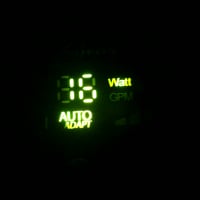Welcome! Here are the website rules, as well as some tips for using this forum.
Need to contact us? Visit https://heatinghelp.com/contact-us/.
Click here to Find a Contractor in your area.
If our community has helped you, please consider making a contribution to support this website. Thanks!
Uponor HePex - how do you know when you have damaged the O2 barrier?
Options
rossn
Member Posts: 136
I am installing a radiant floor using some aluminum track plates in my home. It is a rather challenging install, given the 16" OC joists are not straight forward bays. There are LVL's (single and double) run mid-span between joists for floor strengthening, other areas where additional blocking has been added, etc.
I have all my track plates installed, and have been pulling 1/2" Uponor HePex, however it is taking a beating, as I am working with tight angles and narrow spaces that are difficult to work within, and pushing the limits for bending radius, etc. I have about 400' between two runs.
Given all the snaking I've had to do with the tubing, the far end has now lost all the lettering, and I can only assume that I've damaged the O2 barrier. In hindsight, I think a little more care would help, but not dramatically reduce the rubbing during installation.
My understanding is that there is a thin PE layer over the EVOH oxygen barrier. How do you know when you have worn down to or through the EVOH?
My only thoughts at this point are to cut and re-start, doing short 20-30' sections joined by couplings, though I'm not excited about that.
Interested to hear thoughts. This is some of the more challenging space:

I have all my track plates installed, and have been pulling 1/2" Uponor HePex, however it is taking a beating, as I am working with tight angles and narrow spaces that are difficult to work within, and pushing the limits for bending radius, etc. I have about 400' between two runs.
Given all the snaking I've had to do with the tubing, the far end has now lost all the lettering, and I can only assume that I've damaged the O2 barrier. In hindsight, I think a little more care would help, but not dramatically reduce the rubbing during installation.
My understanding is that there is a thin PE layer over the EVOH oxygen barrier. How do you know when you have worn down to or through the EVOH?
My only thoughts at this point are to cut and re-start, doing short 20-30' sections joined by couplings, though I'm not excited about that.
Interested to hear thoughts. This is some of the more challenging space:

0
Comments
-
Most of us have learned that using 3/8" pex and plates is far easier than using 1/2" in a staple-up application. It's hard to say if you've compromised the tubing or the O2 barrier.0
-
A visual inspection is about the best you can do. Deep scratches is what I would look for.
Not sure how much the system would be compromised by some damage.
Certainly easy enough to replace, with the expansion type couplings fitting you would not change flows much.
O2 barriers do not stop oxygen ingress, but lower it to and acceptable level. Temperature matters, on low temp radiant that ingress potential is very low.
Bob "hot rod" Rohr
trainer for Caleffi NA
Living the hydronic dream0 -
I did talk with Uponor today and the local sales rep. I think I'll cut it out and give it another go with shorter sections, and taping the rough surfaces with duct tape, and getting a second set of hands. Not so easy to replace, but much easier now than the alternatives for sure.
This one is going to be more medium temp around 130 AWT, and there will be panel radiators in the system.0 -
It is common for the writing to rub off the initial section of hePex in many joist installations. It is always a good idea to record the first foot markings on any section of tubing prior to beginning to thread in the joists.0 -
Could always just set it up with a heat exchanger and pump designed for open systems.0
-
I think that there are different methods of mfg. oxygen barriers on/in pex pipe. I trust that Uponor's pex A is one of the best. It seems like the o2 barrier is "within" the pex plastic in pex A. There are some versions of heating pex out there that have a very shiny exterior that seems to scratch easily (red-colored). This one seems more vulnerable to abrasion. Also "up for discussion" is PERT pipe (dull orange color). It is very flexible--i.e. more than Uponor HePex. It too has an oxygen barrier. There are 3 manufacturing methods for pex pipe: A, B, and C. Its best to know what you are using.0
Categories
- All Categories
- 87.3K THE MAIN WALL
- 3.2K A-C, Heat Pumps & Refrigeration
- 61 Biomass
- 429 Carbon Monoxide Awareness
- 120 Chimneys & Flues
- 2.1K Domestic Hot Water
- 5.8K Gas Heating
- 115 Geothermal
- 166 Indoor-Air Quality
- 3.7K Oil Heating
- 77 Pipe Deterioration
- 1K Plumbing
- 6.5K Radiant Heating
- 395 Solar
- 15.7K Strictly Steam
- 3.4K Thermostats and Controls
- 56 Water Quality
- 51 Industry Classes
- 50 Job Opportunities
- 18 Recall Announcements


